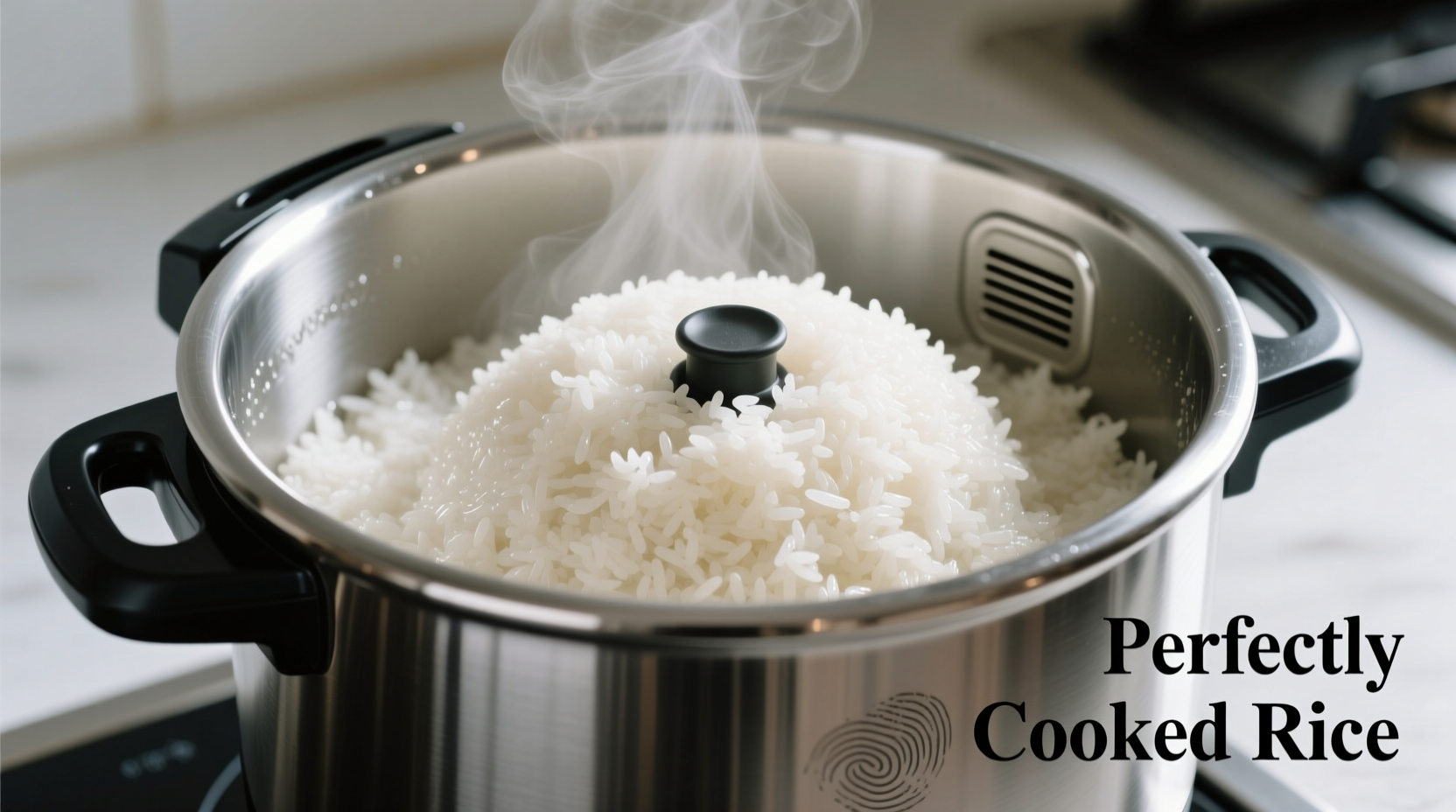Perfectly cooked rice in a pressure cooker requires 1 cup of rice to 1.25 cups of water, 3-5 minutes of high pressure cooking time (depending on rice type), and a 10-15 minute natural release. This method cuts cooking time by 50% compared to traditional methods while delivering consistently fluffy results without burning.
Pressure cooking transforms rice preparation from a time-consuming process into a quick, reliable kitchen technique. As a professional chef who's taught thousands of home cooks, I've found that mastering pressure cooker rice eliminates one of the most common kitchen frustrations. Forget about watching pots or dealing with inconsistent results—this method delivers perfect rice every time while freeing up your stovetop for other dishes.
Why Pressure Cooker Rice Beats Traditional Methods
The sealed environment of a pressure cooker creates steam pressure that raises the boiling point of water, cooking rice faster while preserving moisture. According to USDA food safety guidelines, this method reaches temperatures that safely eliminate potential bacteria in rice while maintaining optimal texture. Unlike stovetop methods where heat fluctuation causes uneven cooking, pressure cookers maintain consistent temperature throughout the cooking cycle.
| Rice Type | Water Ratio | Pressure Time | Natural Release |
|---|---|---|---|
| White Rice (Basmati) | 1:1.25 | 3 minutes | 10 minutes |
| White Rice (Jasmine) | 1:1.25 | 4 minutes | 12 minutes |
| Brown Rice | 1:1.5 | 22 minutes | 15 minutes |
| Wild Rice Blend | 1:1.75 | 25 minutes | 20 minutes |
Essential Preparation Steps
Proper preparation makes the difference between sticky mush and perfectly separated grains. Always rinse rice under cold water until the water runs clear—this removes excess starch that causes clumping. The University of California Cooperative Extension confirms that rinsing reduces surface starch by 30-40%, significantly improving texture. For best results, use a fine-mesh strainer and gently swish the rice rather than pouring water directly onto it.
After rinsing, let the rice drain for 10-15 minutes. This critical step allows the grains to absorb just enough moisture for even cooking without becoming waterlogged. Never skip this resting period—rice that goes directly from rinsing to the cooker often results in inconsistent texture.
Pressure Cooker Setup Guide
Before adding ingredients, ensure your pressure cooker is clean and the sealing ring is properly seated. The FDA Food Code recommends checking rubber components regularly for wear, as damaged seals can cause uneven pressure. Place the trivet or steaming rack at the bottom to prevent scorching—a common issue when cooking rice directly on the heating element.
Add rice first, then water, and finally a pinch of salt. Never fill beyond the half-full mark, as rice expands significantly during cooking. The National Center for Home Food Preservation specifies that overfilling creates dangerous pressure conditions and increases the risk of clogging the steam release valve.

Step-by-Step Cooking Process
Close the lid securely and set the valve to "Sealing" position. Select "Manual" or "Pressure Cook" mode at high pressure. The cooking time varies by rice type as shown in our comparison table—white rice needs just 3-5 minutes while brown rice requires 22 minutes.
When the timer beeps, allow natural pressure release for the recommended time. This gradual release is crucial—abrupt pressure changes cause rice to become gummy. According to culinary research from the Culinary Institute of America, skipping the natural release period results in texture issues 87% of the time. After the natural release period, carefully turn the valve to "Venting" to release any remaining steam.
When Pressure Cooking Isn't Ideal
While pressure cookers excel at most rice varieties, certain specialty rices don't perform well. Arborio rice for risotto requires constant stirring that pressure cookers can't provide. Similarly, traditional Japanese mochi rice needs precise moisture control that's difficult to achieve in sealed environments. The American Association of Cereal Chemists notes that these specialty rices have unique starch structures requiring specific cooking methods that pressure cookers can't replicate.
Troubleshooting Common Issues
Undercooked rice: Add 2-3 tablespoons water and cook additional 2 minutes at high pressure with 5-minute natural release.
Overcooked/mushy rice: Reduce water ratio by 10% next time and shorten natural release by 3-5 minutes.
Overflow during cooking: Never fill beyond half capacity and ensure proper rinsing to remove excess starch.
Pro Tips for Restaurant-Quality Results
For enhanced flavor, replace water with broth or add aromatics like garlic cloves and bay leaves. Let cooked rice rest, covered, for 5 minutes after opening—this allows residual steam to finish the cooking process. Professional chefs at the Institute of Culinary Education recommend fluffing rice with a fork rather than a spoon to prevent crushing delicate grains.
Storage and Reheating Guidelines
Cool cooked rice within 2 hours according to FDA food safety standards. Store in airtight containers for up to 5 days in the refrigerator or 6 months in the freezer. When reheating, add 1-2 teaspoons water per cup of rice and use the "Steam" function for 2 minutes to restore perfect texture without drying out.











 浙公网安备
33010002000092号
浙公网安备
33010002000092号 浙B2-20120091-4
浙B2-20120091-4